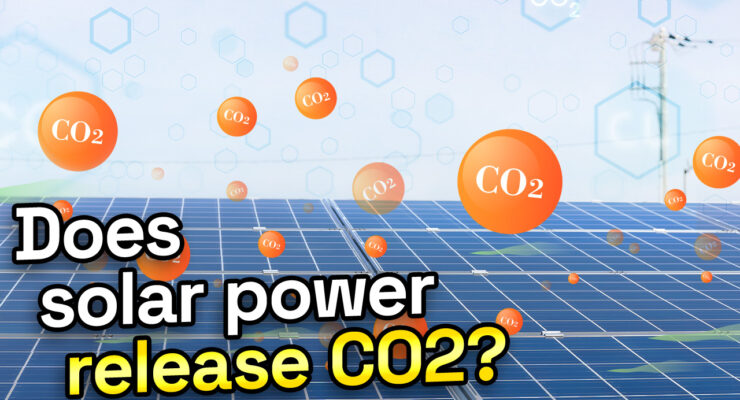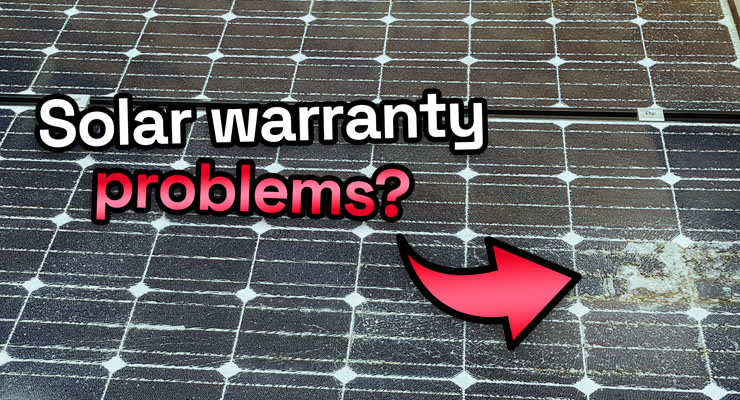Fast read
Making solar panels and mining minerals both produce CO2 emissions, mostly from solar energy production. However, solar panels leave behind significantly less carbon than fossil fuels.
Making silicon semiconductors used in solar cells, a step in creating solar panels, results in the most CO2 emissions. However, other minerals like rare earth metals and silver also have a larger carbon footprint. In addition, installing battery storage systems results in a larger carbon footprint because lithium is used.
From an environmental standpoint, solar electricity is still a much better option than coal power despite these emissions. However, it is crucial to consider and minimise any potential adverse effects.
Does solar power produce CO2?
While solar panels and manufacturing inverter solutions do not produce CO2 while in operation, some CO2 emissions are associated with solar equipment manufacturing. Solar panels have a smaller carbon footprint than fossil fuels and other energy sources. This means that it actually removes more carbon from the atmosphere than it produces.
Carbon positive means the solar system makes more clean energy than the carbon emissions from making and moving it. This renewable energy offsets the carbon emissions. The solar system is installed at the site where it will be used.
Where does the carbon footprint come from?
We must look at a life-cycle assessment of solar gear to determine the total CO2 cost of solar panels and inverters. This calculation must include everything from mining raw materials such as silicon, silver, metals, etc., to transporting, manufacturing, installation, and end-of-life disposal or recycling of the PV system.
Making solar panels and their frames and rails creates most of the CO2 emissions in the manufacturing process. Solar panels utilise silicon cells to capture and convert the sun’s light energy into usable energy.
Making solar cells from silica involves using a lot of energy and heat. This process also results in the emission of a large amount of CO2. The transport of the material, often from China or Europe, also adds to the carbon footprint of solar panels.
What about the components?
The Journal of Sustainable Metallurgy writes in 2021, “Aluminum requires 12.5–16 kWh/kg Al in the electrolysis process, while the specific electrical energy consumption for MG-silicon production is in the range of 10.5–13 kWh/kg Si.
The type of energy used to make electricity affects how much carbon is released. Solar panels use materials like silver to move electrons and make electricity. Additional minerals that work to make up not only a solar cell but also its carbon footprint are phosphate, which is used to coat the panels and earth metals, such as copper, which is also included.
When a solar system has a battery, it requires additional space. This is because the battery needs materials such as lithium, nickel, cobalt, and magnesium. This makes solar panels have a bigger impact on the environment when they are made and when they are disposed of.
Disposal or recycling?
If disposed of improperly, the toxic lead, copper, and nickel-based elements within lithium batteries only harm the environment. However, recycling opportunities for batteries are increasing significantly, and lithium-based batteries are 98% recyclable. High recycling rates will bring down the carbon footprint of the next generation of solar panels.

electricity
How does the CO2 content in concrete equipment compare to fossil fuels?
Let’s look at the life-cycle assessment of solar panels and other system parts. Australia’s rooftop solar electricity generation has a low carbon footprint of under 40g/CO2 per kWh because of the strong sunlight. Industry publications have estimated this. This is a complete cradle-to-grave assessment covering mining, manufacturing to usage and end-of-life management.
For comparison, many coal power plants in the world produce over 1kg CO2 eq / kWh, and even the “cleanest” coal power is generally above 700 g CO2 eq / kWh and, on average, globally, is approx 820g eq/ kWh. Natural gas generation is less polluting, with above 400 g CO2 eq / kWh emissions.
So while solar electricity does have a CO2 content, it is over 20 times less than the CO2 attributed to coal power and 10 times less than gas.
A study published by Nature Energy was more optimistic, with estimated emissions below 21 g CO2 eq / kWh for quality solar. Better solar energy systems last longer, make more clean energy, and have a lower CO2 impact than lower quality solar power systems.

So do solar panels have a carbon footprint?
Solar power is not completely CO2-free yet, but it helps reduce CO2 in generating electricity. However, this is not to say that it can’t be even more CO2-free in future.
Despite this assessment, overall, the result is positive. The solar system’s carbon debt is around 20 times less than coal-powered energy sources. This shows that solar power is a better choice than coal power for the environment.
Finally, solar energy is becoming more affordable and easier to set up anywhere worldwide. Australia has low solar system prices because of strong competition in distribution and installation. Prices are among the cheapest globally.
If companies and nations want to reduce their fossil fuel emissions, they must continue to expand their renewable energy sources and create incentives for developing renewable energy industries. Considering the side effects of solutions is important. We should try to minimise them, this way, fixing one issue doesn’t create another.



